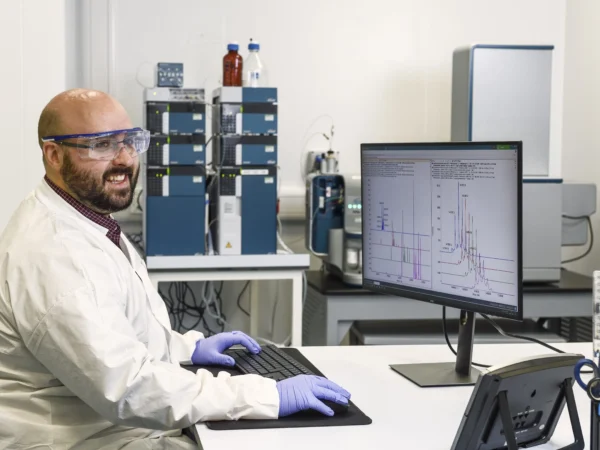Monitoring pH stress of biologics
Forced degradation of Trastuzumab and Trastuzumab-Vedotin ADC using a SCIEX X500B mass spectrometer
Biologics, particularly those based on monoclonal antibodies, are highly heterogenous with a variety of posttranslational modifications (PTMs), including glycosylation, oxidation and deamidation. Some of these PTMs could be induced via stress or storage conditions and may be critical quality attributes (CQAs) affecting efficacy and patient safety. pH stress may occur during downstream biologics processing in cation or anion exchange chromatography, or during conjugation reactions if a pH adjustment is required for optimal attachment of a linker. Acidic or basic conditions may induce fragmentation of protein species or induce dehydration and deamidation. High pH can also lead to formation of soluble or insoluble aggregates.
This study was designed to monitor the pH stress on a monoclonal antibody and an antibody drug conjugate (ADC). Samples were incubated in 50 mM Citrate pH 2 or 50 mM Tris-Base pH 10 at 37°C for up to 60 hours with online sampling. Intact and reduced proteins were considered to track various domain sites. All data was collected on a SCIEX X500B mass spectrometer with an EXION HPLC. The chromatography was performed with a bioZen XB-C8 Column (2.6 µm, 50 x 2.1 mm).
Under acidic conditions intact Trastuzumab begins to form three distinct fragments. Fragment one with a mass of 23,440 is present at T0 and increases rapidly over the first few hours with fragments two and three becoming visible at the 24 hour time point and continuing to increase up to 48 hours. Fragment two had a distinctive series of peaks 162 Da apart which indicates it likely comes from the Fc region of the mAb.
Under basic conditions asparagine can undergo deamidation to aspartic or iso-aspartic acid with a mass shift of +1 Da and a potential structural change. We observed a definitive mass shift on the light chain of Trastuzumab under pH 10 indicative of such a change. Further localisation of these modifications could be performed using tryptic peptide mapping of the stressed samples.







